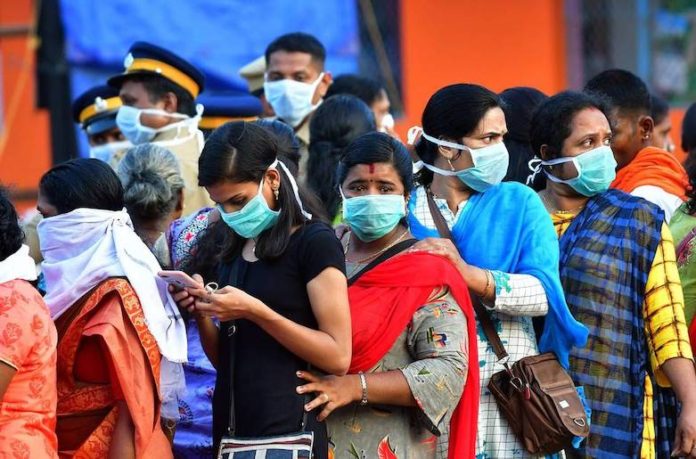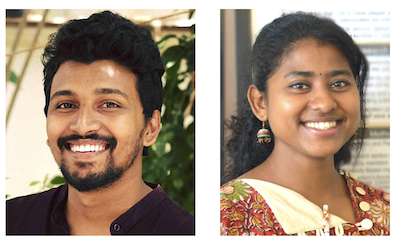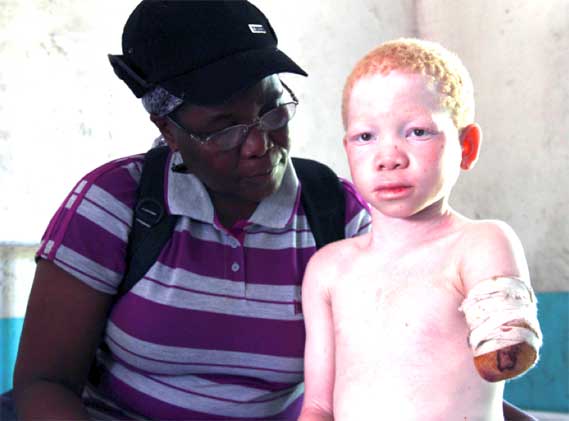
 By Ajith Raj R & Gloria Benny
By Ajith Raj R & Gloria Benny
“The COVID-19 is just another silly bug; not even a threat when compared with the deadly Nipah virus which we have successfully fought in the past. So nothing to worry about COVID-19”.This quote appeared in one of the advisory materials published for COVID-19 awareness in the regional language of the southern Indian state of Kerala.
A reader from outside may frown at these lines in a government advisory material issued in the wake of a pandemic, however, Keralites till this date, through their actions have been proving and reiterating what is stipulated in the advisory materials. Yes, COVID-19 has never been an existential threat for Keralites. The numbers speak as to why this is so.
When the lockdown crossed two months, there were close to 1000 cases reported in the state with very little mortality attributed to this virus attack. The state achieved the least death rate of 0.005% against the global average of 0.04%. More importantly, over 50 % of infected people, which included elderly who are very vulnerable to the virus, recovered in the state and the rest are getting treated for. The recent spike of COVID-19 cases is attributed to the massive influx of an estimated two hundred thousand expatriates, mainly from West Asia, returning home. As evident in their anecdotes, the returnees, too, have an impeccable faith and great confidence in the state’s overarching system. This faith is, obviously, one of the reasons as to why they decided to return back to Kerala.
Kerala has been known for its success in public health and education for a long time. It is India’s first state to bag the tag of “100% literacy”, and the state’s human development, as measured by UNDP’s Human Development Index, is often pitched against those of developed countries. Furthermore, Kerala has experimented with various approaches accentuating social development, decentralization, and inclusive-participatory development programs. Amartya Sen, eminent development economist and Nobel laureate, lauded this approach focused on human development as “Kerala model of development”
‘We shall overcome’
This higher social development in Kerala has enabled the state to deal with disasters effectively, including the 2017 Nipah virus Disease (NiV) and two devastating floods, first in 2018 and then in 2019. In 2020, Kerala is yet again in the limelight for leading an effective battle to contain the deadly and fast-spreading Covid-19 pandemic.
Higher social development in Kerala has enabled the state to deal with disasters effectively.
“We could overcome the deadly Nipah epidemic and devastating floods. We will overcome corona”#We shall overcome”
This tweet appeared on Jan 31 on the official twitter handle of Kerala’s Health Minister Mrs. Shailaja after the first case of COVID-19 was reported in the state as well as in the country.
The tweet from Kerala’s health minister, who has been widely loved as a determined leader and affectionately called Sailaja Teacher by many, wasn’t just a ‘tweet’ but a call to boost the confidence of over 30 million Keralites to prepare for the pandemic.
Kerala’s course in combating the pandemic
In fact, the “Kerala model COVID-19 response” is a well-thought-out and executed action plan. This response combined the right blend of various factors, including the creative use of technology, efficient use of available and scarce resources, and responsible use of institutional powers.
Principally, it was decentralization and participatory approach to development that steered the actions taken in the response. The response thereby was not limited to creating adequate medical response or treatment facilities. It was a holistic approach that included fighting the virus from community spread and creating awareness on the issue and boosting the morale of the Kerala society while addressing the socio-economic challenges and uncertainties brought by the pandemic.
Following the first case reported in Kerala, a “war room” was set up immediately in the state which kick-started the fight against the ‘invisible enemy’. The “war room” took charge of checking the plausible marathon of the virus in the state.
The round the clock ‘war room’ was set up to monitor and supervise the containment activities of COVID-19 and to sort out the grievances promptly. It was more like a “mini-government” with ministers and higher officials operating in shifts, handling a range of issues – logistics, transport, migrant workers, medicine and other essential commodity supplies, foreigners’ issues, and so forth. Although begun as a centralized commanding center, the institution slowly got decentralized to accommodate the growing number of cases in the state.
‘Route maps’ to root out the virus
During the first week of March 2020, Kerala saw a spike in the number of COVID-19 cases, mostly reported from the non-resident Keralites who came from foreign countries. Although airport screening was mandated, reports were released that a few members of a family skipped the screening and were later tested positive for COVID-19. It raised concerns about community spread of the disease and the government proactively countered the threat by releasing travel history and “route-maps” of the Non-Resident Keralites. This was obviously intended for the general public, to help be vigilant about the spread of the virus.
Although Kerala houses one of the best primary health care systems in India, the state government had to fill in some infrastructure gaps to fight the virus. The state government took immediate measures to augment the capacities of testing facilities, set up sophisticated labs, and quickly filled in vacant posts of frontline health workers.
Increased demand and inadequate availability of Personal Protection Equipments’ (PPEs) became a “headache” for the health system. To counter the scarcity and to make use of this scarce resource, Kerala rolled out the Walk-In sample KIOSK (WISK) for the first time in India. WISK was established to collect samples from asymptomatic people and required no direct contact between the health professionals and patients. With this technical fix, the fear of infection for the frontline health workers was significantly reduced.
Mass production by masses
A surge in the number of cases also increased the demand for safety gear in the state. Simultaneously, the price of personal protective equipment (PPEs) shot-up. To address the surging price of PPEs and ensure its availability, the Kerala government approached the Kudumbashree, a state-run poverty alleviation and women empowerment program that aims to empower women through the Self Help Groups (SHGs).
The SHGs functioning under this initiative forayed into the production of essential life-saving equipment making and decentralized the production of masks at the tailoring units run by them. The members of Kudumbasree started producing cloth masks at their tailoring units and recorded production of a whopping 1,26,000 masks a day. This approach has also been adopted for the production of face shields and sanitizers which were in high demand during the initial phase of the outbreak.
Then came a tweet from Pinarayi Vijayan, the Chief Minister of the state:
“In light of the shortage, directions were given to engage the prisons in the State in manufacturing masks,” he tweeted. “It has commenced on a war footing basis. Today, the Prison officials of Thiruvananthapuram Jail have handed over the first batch.”
This tweet generated a lot of buzz on twitter and everyone applauded the CM for involving prisoners in the fight against the pandemic. And the unique ways of mobilizing the resources and using it creatively attracted the attention of people across the country.
The government also decentralized sanitizer production by outsourcing it to students in colleges. In addition, through expert teams, instructions on scientific ways of producing low-cost sanitizers and handwashing were given.
“Break the chain” to chain the virus
With the limited knowledge of the sporadic and highly contagious virus, the primary and the most immediate step which the government took was a massive campaign to break the biological spread of the virus. The only known solution to stop viruses from spreading was to ask people to sanitize their hands, and Kerala made good use of this solution. The Kerala government initiated a massive statewide campaign for promoting handwashing habits and the use of sanitizers.
Civil society actors and volunteers were also part of the campaign which was titled “Break the Chain”, which later became a hashtag campaign on social media platforms. As part of the campaign, hand washing booths were set up at bus stops, markets, public spaces, and offices. People frequently visited those booths and washed their hands. It was the beginning of a behavioral change among the people.
Powerful things can be simple too!
Kerala produced a range of advisory materials to prevent the spread of COVID-19. It included posters and videos for a detailed understanding of the disease. The advisory materials covered a lot of issues ranging from the preventive measures to myth busters, information on taking care of kids and aged people from the virus. For effective communication of complex information of the virus and for precautionary measures, even memes were used.
On the other hand, different government departments took initiative in creating informative short videos for awareness. While generating enough content to circulate, the government also paid a lot of attention in checking the spread of fake news and wrong information. Facebook-India collaboration with the government helped in training the health workers to advance their technical skills to track the spread of fake news in areas of clinical care.
Lockdown in Kerala
The national governments across the world were compelled to use lockdowns as a last resort to contain the virus spread. Following this, India also declared a complete lockdown of all social and economic activities in the middle of March 2020. The National lockdown guidelines were also applicable to Kerala as well. As the lockdown declaration was a sudden one, the state government did not have enough time to prepare to face the lockdown.
However, the Kerala government, once again, took a proactive approach. With the help of the Police department, they introduced a complete lockdown for the social and economic activities in the state. For the first time in India, Kerala police started using drones to do surveillance on the movement of people during the lockdown. The use of drones was very useful in preventing community gatherings that violated physical distancing guidelines. Alongside, issuance of travel passes by the government facilitated the movement of people in emergency situations.
Travel restrictions and unavailability of public transport posed a challenge in ensuring the supply of grocery and essential medicines during the lockdown period. The government intervened at this stage by using the police force to do the delivery of essential commodities at doorsteps. In addition, with the help of volunteers, special call-centers were set up for the local administrative units. These initiatives were on a mission to ensure food accessibility for everyone during the lockdown by decentralizing the doorstep delivery of essentials through which adequate commodities supplies were ensured.
None to be starved during the lockdown
Apart from doorstep delivery of essential goods, the Kerala government took care of distributing cooked foods to the needy at their doorsteps free of cost by setting up community kitchens at all the 941 panchayats in the state. These kitchens are run by local self-governing bodies in association with the state’s poverty-alleviating Kudumbashree project involving women volunteers. The program has been supported by cooperative societies and voluntary organizations on the ground, whose volunteers are referred to as the Arogya Sena (Health Army), and operate mainly via local WhatsApp groups. At present around 1,255 community kitchens are functioning across the state serving over two hundred and eighty thousand food packets a day. They mainly cater to the weaker and vulnerable sections of the society, including the homeless.
Lockdown has a physical, economic, and psychological impact on the lives and livelihoods of people, and the Kerala government seems to have understood it in advance. As an initial step, the government is promoting local production of agriculture produce in the state which otherwise exorbitantly depends on the farmers of neighboring states. The program was initially intended to engage people in farming after following all COVID-19 safety measures to get rid of the psychological pressure accumulated after sitting ideal at home for a long period.
As per the program, the government with the support of the agriculture department, agriculture university, volunteers, and Kudumbasree, started distributing over 5.5 million packets of vegetable seeds across the state. Also, the chief minister of the state came forward and asked people to use the lockdown days to learn to farm and use it as a “stress buster” during the lockdown. This initiative is also a foothold on the decentralization of agriculture production and develops an interest for people in farming which is the least practiced vocation in Kerala.
Ensuring Comprehensive Health through Community-Centred Health Actions
The Primary Health centers’ engagement with the community tried to make people aware of being socially responsible with their acts during the pandemic. Local Self Governing body members and the public health system also backed health workers battalions who were doing continuous monitoring of the health condition of the people in every nook and corner of the state. A group of Accredited Social and Health Activists (ASHAs- community health workers) at the grass-root and the frontline health workers were actively taking the lead to provide service on a door to door basis. Health workers were also made responsible for updating the records with the details of repatriates from other countries and Indian states.
These were steps taken to create reliable data for managing the outbreak not only on a ‘test-test-test’ microscopic approach but also for limiting the penetration of the virus into the community by having a “bird’s eye view”.
The state government bore the cost of all COVID-19 treatment expenses in the state and reiterated its commitment and care for its people.
A burgeoning need for clinical and curative care burdened the health system of the state. Kerala, however, upheld the motto of “care for all” and emphasized on providing holistic health care and lessening health inequity. The state government bore the cost of all COVID-19 treatment expenses in the state and reiterated its commitment and care for its people.
Having the lowest fertility rate in India, Kerala is in a demographic transition with elderly citizens slowly outnumbering the young population. This population was categorized into the high-risk group according to the COVID-19 care protocols. Hitherto, Kerala is offering impressive COVID-19 care to the elderly, not distinguishing whether they are natives or foreigners.
In the course of time, the state scaled up its technical capabilities in providing tele-counseling for psychosocial support to people and health personnel handling the COVID-19 crisis. In addition, psychosocial support calls were given to mentally-ill patients, children with special needs, and guest laborers from other states of India.
As an infrastructure boost, the government intervention transformed a “medical-college-under-construction” into a full-fledged COVID-19 hospital. This was aimed at averting the crisis in the northern Kasargod region; the first declared COVID-19 hotspot in India.
In addition, the government pushed harder to find new ways, through research, of treating the disease using traditional and modern medical systems. As a result, a few remarkable treatment advances were made. For instance, the development of rapid test kits locally enabled the screening of more people in less time. Due to advancements in areas like plasma therapy, the Indian government granted permission for Kerala to test the technology for the first time in the country. As a recent development, the state government issued an ordinance to scale up its quarantine capabilities by taking over vacant houses across the state. It is envisaged that this move will provide cheap quarantine facilities for many people, including tourists, people in transit, and for people who have houses but lack facilities required for home quarantine.
Kerala says it again: “We shall overcome!”
The pandemic response of Kerala is offering us an unparalleled opportunity to learn lessons to combat a pandemic at the scale of COVID-19. With stride and determination, the community spread is limited to a minimal number which is otherwise flagged as the most challenging aspect for many developed nations.
As we have demonstrated in this article, Kerala could showcase a model response in containing the virus through effective governance. Kerala resorted to a holistic strategy accepting the limitations, and experimenting decentralized approaches with the participation of people. The state also resorted to the creative use of technology and responsible use of power enabled it to stem the sweeping wave of the pandemic. In the process, the state government was determined and dared to break the conventional norms and the typical bureaucratic hurdles (including red tapes). This determination of the state government unleashed new energy for cooperation among various government departments which otherwise would be caught up in narrow departmental mandates.
Timely interventions and health actions are not the only aspects that enabled the Kerala model of COVID-19 response to be unique. It focused a lot on preparing Kerala as a society to face this adverse condition by building people’s trust in its health system. This system worked as an ‘antidote’ to an extent in spreading the deadly virus. Kerala’s COVID-19 response also rekindled the spirit of the community and called for joint action. As the health minister tweeted, Kerala reminds us that “We shall overcome” these difficult times through our collective efforts and spirited minds.
(Ajith Raj R is a researcher at the Dakshin Foundation, Bangalore, India. He holds a Master’s degree in Development from Azim Premji University, Bangalore. Gloria Benny is a public health researcher currently working as a consultant with the George Institute for Global Health – India. She, too, holds an MA in Development from Azim Premji University, Bangalore, India.)











Good article, but probably one-sided. They should have explained what didn’t work also. A balanced analysis always should focus on what didn’t work well also.
Impressive work, but not as impressive as China’s 😀
Long, but a nice read. Amartya Sen’s capability approach in action, probably. Would be nice to read a long-term analysis on the subject, i.e. not only during the pandemic but after it also.